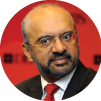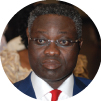The Banker Awards 2012 – Global and regional winners
The regional disparity when it comes the fortunes of the financial markets has been as stark as ever throughout 2012, from the continued malaise in Europe to further growth in Asia and Latin America. Yet throughout all of the world’s continents, there have been some stellar performances, the most impressive of which are saluted here.
the Global and regional awards winners
Global
Scotiabank
Western Europe
Nordea
Central & Eastern Europe
Raiffeisen Bank International
Asia-Pacific
DBS
Americas
Scotiabank
Middle East
Qatar National Bank
Africa
United Bank for Africa
Global Transaction Banking
Standard Chartered
Financial Inclusion
CFG Services
Global and Americas
Scotiabank
At a time when scandals continue to hit the global banking sector and capital constraints force international lenders to rethink their growth strategy, identifying the world’s best bank requires a close inspection.
With excellent risk management, a strong geographical and product diversification, a recent acquisition in one of the world’s most promising markets and sustained shareholder returns, Scotiabank is this magazine’s choice as The Banker’s Global Bank of the Year.
Scotiabank closed 2011 with a healthy return on equity of 18.8%, which by the end of July 2012 had already gone up to 20.3%. Its long-term return is also admirable, with a 20-year compound annual growth rate of 15.5%, a figure the envy of many of the world’s leading banks.
“Those who manage risk well do particularly well, those who do not manage risk well obviously have issues,” says Scotiabank chief executive Rick Waugh. “Anything we do, we manage according to our risk appetite to make sure that we not only have our risk controlled but that we’re getting good rewards for it.”
Good risk management has helped to boost Scotiabank’s capital strength – the bank’s Tier 1 capital ratio as of July this year was 12.6% – and means it can move fast when business opportunities arise, such as in the case of last year’s acquisition of Colombian lender Colpatria.
“General Electric decided it had to sell its position in a very good bank in Colombia, Colpatria, and because we have good risk management, good capital, and strategically South America is very important to us, we were able to relatively quickly do our necessary due diligence and capitalise on [this deal],” says Mr Waugh.
Scotiabank has intensified its focus on Latin America and the Caribbean over the past decade. Indeed, the bank has had a presence in the region for more than 100 years, having launched operations in Jamaica in 1889, before the Bank of Nova Scotia – as Scotiabank was then known – had an office in Canada’s main financial centre of Toronto.
“In the past several years we’ve done two things: we’ve expanded in some markets and we’ve contracted in some markets,” says Mr Waugh. “We’ve expanded in those markets where we consider that our traditional banking products have strong growth prospects, because their economies are growing, because there’s low level of bank penetration and because we can bring value. At the same time, we contracted in lower growth markets. We have very quietly consolidated all of our European operations, which meant that we closed down branches in many countries.”
Product-wise, Scotiabank has maintained its impressive diversification, with earnings being generated in equal parts in its home market, Canada and abroad, with three-quarters of these earnings coming from commercial and personal banking and one-quarter from wholesale banking. The bank has also expanded its reach in Canada thanks to the recently completed acquisition of ING Direct’s local operations and of investment manager DundeeWealth. Furthermore, its investment banking business has been climbing up the list of top lenders in the oil and gas sector in North America, and of the leading merger and acquisition advisory firms in the same field.
Further expansion is expected in the future, whether organically or through takeovers across Scotiabank’s existing markets, as well as new ones.
Highlights from the 2012 Bank of the Year awards, held in London. This highlights video features interviews with some of the regional and global winners including DBS, Raiffeissen Bank International, United Bank for Africa and Scotiabank.
Highlights from the 2012 Bank of the Year awards, held in London. This highlights video features interviews with some of the regional and global winners including DBS, Raiffeissen Bank International, United Bank for Africa and Scotiabank.
The Banker Awards 2012 Highlights
Highlights from the 2012 Bank of the Year awards, held in London. This highlights video features interviews with some of the regional and global winners including DBS, Raiffeissen Bank International, United Bank for Africa and Scotiabank.
Western Europe
Nordea
The Scandinavian countries were once the neglected periphery of European banking. But ‘periphery’ has come to mean something quite different in recent years, and instead the Nordic banks are now viewed as beacons lighting the way to a sustainable model for post-crisis European banking. Nordea exemplifies this achievement. The bank’s return on equity has not dropped below 8% for a single quarter since the crisis began, exceeding 10% on an annual basis each year, even with a capital adequacy ratio of about 12% – a performance matched by very few banks anywhere in the developed world.
For Christian Clausen, group chief executive of Nordea, the roots of his bank’s success go back to its origins as a merger of banks hit by Scandinavia’s own credit crisis in the 1990s. To make the integration work, Nordea focused on relationship banking, building the bank around its core customers without straying into non-core activities.
“We were strong going into the crisis, maintained our profits and managed our risks. Therefore we were in a position to build capital so that we had the resources to be there for our customers. Plenty of customers needed some extra liquidity during the crisis, and they remember which banks stood up for them when they needed it most. Even the very largest customers found that they ran out of support from other banks at the worst possible time,” says Mr Clausen.
His recipe for the future is to stay nimble and to stay close to the customer. Since so many banks are being pushed by regulators and investors to operate with stronger capital and funding, many products will need repricing, but there is no way of knowing when that will happen. Consequently, the product lines and customer segments that offer the best opportunities can change quickly.
“There is no specific area that we can consistently view as the best opportunity. For every customer and every transaction we must be diligent and disciplined on getting the right return on capital. That means having a dialogue with customers on pricing and on structuring capital-light solutions, which is what makes the relationship banking model so important,” says Mr Clausen.
The new environment also requires tight cost control, and Nordea has carried out 10% staff cuts while switching the weight of banking services from branches to online. But this is complemented by a more advisory relationship with customers, including providing retail customers with the kind of financial planning discussions more commonly associated with business banking.
Central and Eastern Europe
Raiffeisen Bank International
Being a regional player in central and eastern Europe has not been for the faint-hearted since the onset of the financial crisis, and Raiffeisen Bank International has certainly taken its share of knocks. But throughout all the turmoil, the bank has never faltered in its commitment to the region and has even increased its presence with the acquisition of Polbank in Poland.
Gradually the numbers are starting to come right, with return on equity before tax climbing from 13.7% in 2011 to 17.3% in the first half of 2012, delivering profits of E967m in 2011 and increasing core Tier 1 to more than 10%.
Raiffeisen has a presence in 17 central and eastern European markets (in 15 with banks) and is ranked among the top five for lending in 11 of these countries. Chief executive Herbert Stepic says: “We are delighted about winning The Banker’s central and eastern Europe regional award. which reflects our hard work in improving the franchise after the crisis.
“This has involved a complete change in business strategy. We have been trying to compensate for the additional regulatory burden with improved cost-effectiveness, and we have focused on cross-selling to customers rather than just selling one product to a customer. Products have become more standardised and turned into smart assets that can be used more effectively on the balance sheet, including for European Central Bank (ECB) collateral. We are investing in technology to stay a market leader and looking at new ways of offering services such as by franchising.”
The bank filled a significant hole in its regional coverage with the acquisition of Polbank. By combining this with existing operations, Raiffeisen now has a bank that is the sixth largest in Poland and serves more than 900,000 customers.
Raiffeisen has also enhanced its market presence with direct bank Zuno launching in Slovakia in December 2010 and the Czech Republic in July 2011. By June of 2012, Zuno had attracted more than 110,000 customers and more than E600m in deposits across the two markets.
The bank notched up a great performance in this year’s awards, scooping prizes in Albania, Belarus, Bosnia-Herzegovina and Romania as well as its home market of Austria. Raiffeisen Bank International posted the highest profit before tax of any Austrian bank and is naturally proud of its record of being in profit every quarter since its initial public offering back in 2005.
Asia-Pacific
DBS
Singaporean bank DBS has been growing steadily over the past year and building on its vision to create a bank that has a footprint across the whole of Asia.
Its gradual emergence as a serious player in Asia comes at a time when the financial crisis and the state of the global economy has forced many international players to reconsider their strategies for the region.
And DBS’s expansion in Asia also comes at a time when the future growth prospects of the region are increasingly being recognised. Over the past year, DBS has continued to position itself to take advantage of that future growth.
Commenting on the challenges of the global economy, DBS Group CEO Piyush Gupta says: “While we need to be vigilant, there are opportunities for the taking. For example, by being nimble, we’ve been able to gain sizable market share in the [offshore renminbi] space [in 2011] and in the Asian fixed-income space this year.”
In 2011, DBS achieved record profits of S$3.04bn ($2.48bn), the first bank in Singapore to pass the S$3bn mark. Building on this solid performance, its earnings for the first half of 2012 were S$1.74bn, continuing the steady and solid performance of its quarterly results.
“Compared to many Western banks, Asian banks also have relatively stronger capital and liquidity positions. This positions us well to gain new customers as well as support companies impacted by retreating Western banks. We’re pleased to have been able to deliver 11 quarters of consistently strong performance as we continue to execute against strategy to be a leading Asian bank,” says Mr Gupta.
DBS’s regional expansion will see it focus upon growing its presence in three regions: Greater China, south-east Asia and south Asia.
The bank intends to use Hong Kong as its anchor for its business in Greater China, and it has also identified a number of other key markets in establishing its pan-Asian footprint. Indonesia has been recognised as a bright spot in the region because of the strength of its domestic economy, and in April 2012 DBS made a bid to tap into that potential by making an offer for the Indonesia’s Danamon Bank. At the time of writing, this deal was still subject to regulatory approval.
Middle East
Qatar National Bank
Qatar National Bank (QNB) is no doubt the envy of banks not just across the Middle East, but the world over. The lender had an exceptional year in 2011, claiming the title of the largest bank by asset size across the Middle East and north Africa (MENA) region, the most profitable, and the second largest by Tier 1 capital.
Its assets grew by 35.17% to stand at $82.9bn by the end of 2011, driven largely by a 47.3% expansion in its loan portfolio, giving QNB the largest loan book in the region. Meanwhile, its profits grew by 32% during 2011 to reach $2.06bn.
These impressive figures saw the bank jump from 11th position in 2011 to second in The Banker’s 2012 Top 100 Arab banks ranking after boosting its Tier 1 capital by 73% to $8.2bn. Its market share exceeds 45% of banking sector assets in Qatar.
In May 2011, QNB increased the bank’s capital by 25% after carrying out a rights issue amounting to $3.49bn that was fully subscribed and will be used in part to help the bank fund its future expansion.
QNB also continued to pursue a successful regional expansion strategy during 2011. It increased its branch network across the Gulf to meet growing demand, but also launched operations in Lebanon and South Sudan.
With regards to acquisition activity, QNB improved again, taking a controlling 69.9% stake in Indonesia’s Bank Kesawan in January 2011. Kesawan operates a network of 40 branches, with total assets of about $492m.
“Our regional expansion strategy for 2013 will focus on expanding and solidifying our presence in the MENA region through a combination of organic and inorganic growth. A number of countries in the region are attractive to us, [particularly] those with a large market in which we do not currently operate,” says Ali Shareef Al-Emadi, QNB’s group chief executive.
“Egypt is one example where we are in the final stage of evaluating an opportunity to acquire the Egyptian operations of Société Générale. Other countries include Turkey, Saudi Arabia and Morocco. The implementation of QNB Group’s regional expansion strategy is in line with the overall strategy that extends into 2017 which will see the bank become a Middle East and Africa icon.”
During 2012, QNB increased its stake in a number of institutions including the United Arab Emirates’ Commercial Bank International from 24% to 40%, and Iraq’s Mansour Bank from 23% to 51%. It also entered into Libya through acquiring a 49% stake in the Bank of Commerce and Development.
Indeed, QNB has been expanding rapidly in the past few years, and today operates in 24 countries around the world through a network of 334 branches. Operations outside of Qatar made up a 16% share of QNB’s profit in September 2012, but the bank is aiming to substantially increase that ratio to somewhere between 40% and 45% in the next three to five years, as a result of it expansion strategy.
“I see QNB Group further expanding its reach in Asia beyond our existing presence in Singapore, where we have had a branch for almost four years, and in Indonesia, through QNB Kesawan,” says Mr Al-Emadi.
Africa
United Bank for Africa
Last year was scarcely a good one for United Bank for Africa (UBA). It had traversed its way through Nigeria’s banking crisis of 2009 without needing any injection of liquidity from the government, unlike many of its peers. But the effects of that period, which led to bad loans soaring across the financial industry, lingered.
By 2011, UBA had yet to cleanse its balance sheet, and took the decision to sell some N130bn ($815m) of non-performing assets at a steep discount to Amcon, a state-owned bad bank. As a result, it posted a N28.5bn pre-tax loss for the year.But 2012 has marked the revival of what is Nigeria’s third largest bank by assets. UBA is once again highly profitable.
Between January and September it made a net profit of N36bn. Its return on equity during the period was 27%, well above that of most local rivals. And its shares have climbed 90% this year.
“The main reason for this turnaround was the bank’s decision to clean up its loan book and start this financial year on a clean slate,” says Phillips Oduoza, UBA’s chief executive. “We leveraged the Amcon window to dispose of our non-performing loans and this created room for the bank to create quality risk assets which added to our bottom line.”
The bank has also managed to boost its efficiency substantially. Its cost-to-income ratio in the first nine months of 2012 was 62%, down from 79% a year earlier. It used its large network of more than 700 branches to increase its deposits by 12% and, thanks to a drive to introduce new products and cross-sell them, its non-interest income by 22%.
Perhaps even more significantly, it has continued to build its pan-African footprint. UBA operates in 18 countries on the continent aside from its home market – far more than any of Nigeria’s other lenders, which have often been criticised for being too slow to move abroad. UBA’s subsidiaries in key markets such as Cameroon, Ghana and Senegal are growing rapidly in terms of assets and profits. Such is their progress that Mr Oduoza is confident UBA will reach its goal of deriving 50% of its revenues from outside Nigeria in the medium term, compared with 23% today and 13% in 2010.
“Our experience in expanding across the continent has awoken many of our peers to the opportunities in Africa outside Nigeria, with many commencing expansion plans in earnest,” says Mr Oduoza.
Global Transaction Banking
Standard Chartered
The year 2011 was the year for banks to excel in global transaction services as corporates and financial institutions followed new emerging trade corridors while at the same time grappling with economic and regulatory woes. Standard Chartered faced some tough competition from the likes of Deutsche Bank, JPMorgan, Bank of America-Merrill Lynch and Citi, but it impressed The Banker’s judging panel with its focus on tailor-made services to small and medium-sized enterprises and its successful pilot of a new trade finance solution, the bank payment obligation (BPO).
While the revelation of a pre-2008 Iran trade sanctions threw a shadow on the otherwise clean slate of the bank, its profit growth still puts most rivals in the shade. The European recession, risks of an upcoming fiscal cliff in the US and policy tightening across emerging economies has slowed down growth across its footprint, even in China. But Karen Fawcett, group head of transaction banking, emphasises the bank is well-positioned in the right markets. The bank’s presence at both ends of the emerging market trade corridors and technology channels has been key.
“We enhanced our cash capabilities to help clients navigate the complex cash management issues when doing business in emerging markets. We launched a new custody platform, enabling clients to directly and indirectly access 39 markets in the fastest-growing regions worldwide, and we announced the appointment of key hires to ensure that our clients get the right level of attention they need,” she says.
In terms of innovation, the bank was the first to announce a successful completion of a trade transaction based on the BPO, which provides the payment assurance and security of letters of credit and the flexibility and easy-to-open account trades. Ms Fawcett considers the BPO a “huge paradigm shift in the trade finance arena” and believes efficiencies delivered by such innovations will support economic growth.
Financial Inclusion
CFG Services
Consumer finance company CFG Services, the winner of The Banker’s Financial Inclusion award, belongs to Thailand’s Bank of Ayudhya, and specialises in providing loans using customers’ vehicles as collateral, whether these are a motorcycle, a tractor or a heavy commercial truck.
CFG’s main competitors are the country’s unregistered informal lenders so speed of disbursement – while carrying out the appropriate evaluations – is key to making sure that customers stay away from loan sharks’ prohibitive hidden charges and collection methods. CFG can approve and disburse a loan in 30 minutes – against the three days typically required by a bank just for the approval process.
Furthermore, to serve another specific market, CFG has ventured into unsecured territory. The microfinance product is designed for wet market traders and allows them flexibility of repayment without demanding a history of financial statements.
“Our wet market lending programme began as an idea from our parent company,” says chief credit officer Thanya Kichainukul. “It encouraged us to promote financial inclusion and create opportunities for self-employed traders unqualified for bank loans. This low-income segment would not be able to borrow from formal financial institutions at all because they lack the necessary documents.”
The loan selection process involves daily visits to the market stalls and interviews with neighbours so that data on behaviour is collected. Investments in mobile systems reduced operational risk as well as costs in this highly labour-intensive model.
Tablets were made available to staff so that they could easily access all customer information, and this enabled them to service up to 120 customers per day, against the 40 that would have been served with a manual process. Mobile printers and SMS services have provided customers with paper receipts and electronic confirmations of their payments, increasing transparency and trust in the product. CFG is extremely proud of this venture.
“[Wet market traders] usually have no choice but to borrow from loan sharks and pay between 5% and 20% in interest rates per month,” says Mr Kichainukul. “One case study I think worth mentioning is that of Jae Uan. If we used standard credit underwriting criteria I’m certain, we would have not approved her loan because the value of the collateral she had was only a fraction of the loan amount. Today, Jae Uan, the owner of a popular fried oyster stall, has revenues of more than Bt30,000 [$975] per day.”









